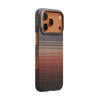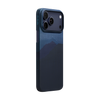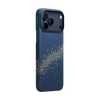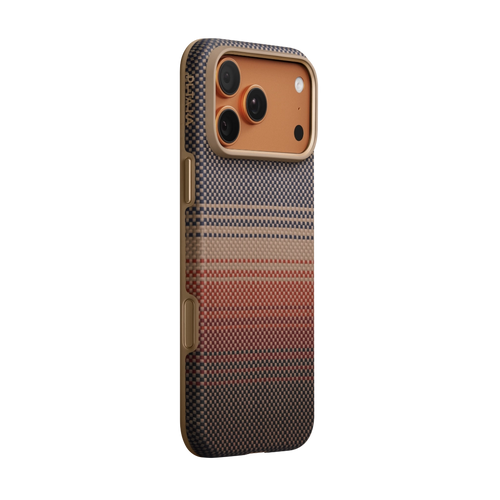Most often, it's a real annoyance waiting for your iPhone to charge fully. And it's only getting worse as smartphones are getting bigger, more powerful along with bigger batteries as well. If you try charging an iPhone with a 5W charger, your pain only gets worse and you will have to wait for a longer time, which is, to some extent, even tantamount to some mental torture.
Fortunately, manufacturers are also working on new fast-charging technologies to help you get the most out of the iPhone and ensure you keep up with this fast-paced world.
1. The beginning of iPhone fast charging
For a long time, the standard charging solution that Apple offered iPhone users was the 5V/1A power adapter, which meant that the maximum output was just 5W, inevitably prolonging the time to recharge the phone.
Back to the 2017 Apple Event, Tim Cook announced that you could fast charge your iPhone 8 or later.
The word ''fast charge'' implies everything – the ability to deliver power in a faster way or to top your iPhone battery off very quickly. Instead of the old charging standard (5W) and APPLE 2.4A charging protocol (12W), iPhone has adopted the USB Power Delivery fast charging protocol, which enables charging three times faster than the old 5W standard.
2. iPhone fast charging standards: PD and PDO
The Qualcomm Quick Charge was the first fast charging standard, widely used in Android phones, including the Samsung Galaxy line; while the USB Power Delivery standard is relatively new and adopted by Google and Apple. Apple first introduced the USB Power Delivery fast charging standard to the iPad in 2015, then the iPhone in 2017.

The USB Power Delivery standard provides slightly higher power output, up to 100W maximum. Unlike the Qualcomm QC, it's used in tablets and laptops as well. So, it is expected to see greater adoption of the USB Power Delivery fast charging standard in more devices in the future.
A USB power delivery charger or power adapter can deliver a range of voltages, from 5V, 9V, 12V, 15V, 19V all the way up to 20V, with each voltage being named PDO1, PDO2, PDO3, and so on. The PDOs differ between different chargers.
Take the Apple 29W PD charger as an example. It can only deliver two types of voltage: 5V and 14.5V, so the PDO1 of this charger is 5V, and PDO2 is 14.5V. Before the charger delivers power to the device, they negotiate and find the voltage that both devices support.

Usually, iPhone PD fast charging will involve both PDO1 and PDO2 from the power adapter. Because PDO2 has a higher voltage than PDO1, PDO2 is used at the start to deliver an initial boost of power for a short period. When the battery reaches a specific point, the charger switches to PDO1, and the charging rate becomes visibly slower. It will automatically turn to trickle charging when the battery of the iPhone reaches around 80%.
3. The fast-charging available iPhone devices and accessories
Starting from the iPhone 8, iPhones support USB power delivery fast charging. To enjoy a faster and more convenient way of charging, you need a USB Power Delivery quick charger.
So far, Apple produces 18W, 20W, 29W, 30W, 61W, 87W, or 96W USB-C power adapters. Since the best an iPhone can support is 20W, you should go with the 20W Apple power adapter. The higher-power adapters are for the iPad or MacBook.
Also, you need a USB-C to Lightning cable (for models before the iPhone 15). Type-C (or USB-C) is the latest type of USB cable (models from the iPhone 15), with the new chip technology that enables higher current delivery.
4. How to know if your iPhone is fast charging?
The iPhone won't display ''fast charging'' on the screen like some Android phones.
First of all, make sure ''Fast cable charging'' is enabled on the App Menu > Settings > Battery.
When your iPhone plugs into a fast charger, you may feel a double vibration or hear the ''ding'' twice. If you don't, check if the device can be charged up to 50% within 30 minutes. The fast charging we're talking about means fast charging at the first phase, then slows down to trickle charging.
To monitor the charging speed anytime, you may use a USB power meter to read charging watts.
5. Is it OK to use the third-party power adapter to fast charge your iPhone?
The answer is Yes. Apple offered the 5W charger for quite a long time even though their iPhones could handle more, and no longer included power adapters in every box starting from the iPhone 12 series. Not surprisingly, iPhone users have to revert to alternative methods. They either purchase an original iPhone fast charger or turn to third-party chargers.
Before purchasing any third-party iPhone fast charger, make sure it supports the USB Power Delivery standard that iPhone follows, and check its wattage. Or you can consider fast wireless charging pads or stands.
6. Does fast charging damage the iPhone battery?
There is no doubt that fast charging an iPhone creates more heat than normal charging, but this does not necessarily mean that fast charging will harm the battery.
In fact, the temperature monitoring module inside the iPhone will control the input power based on the real-time temperature of the battery. When it’s too hot, the iPhone module will lower the power delivery rate to make sure it’s under 50 degrees Celsius. Likewise, the iPhone will gradually reduce the input power when the battery reaches 50%, to maximize the lifespan of the battery. When it reaches around 80%, charging becomes significantly slower.
This is precisely why some iPhone users think that their iPhones stop charging at 80%. You can learn more about this issue from our previous blog: Why Your iPhone Stops Charging At 80% (& How To Fix It)
7. What about fast wireless charging?
Wireless charging is a convenient alternative to cables. If you don't want to use wired fast charging, you may choose fast wireless chargers that let you charge you at home, in the office, or on the go. So even if you can't find time to charge it, there's nothing to worry about.
PITAKA Aramid Fiber Magnetic Power Bank is a Qi2-certified MagSafe battery pack, offering up to 15W fast wireless charging. It features 5000mAh battery capacity to keep your iPhone powered on the go.

To sum up, what do you need for iPhone fast charging?
- An iPhone 8 or later
- A USB-C power adapter with at least 20W output
- A USB-C to Lightning cable (for iPhones before iPhone 15), or a USB-C to USB-C cable (for iPhone 15 and newer)
- A MagSafe charger if you prefer wireless charging
Using the correct accessories can significantly cut down charging time, making your iPhone more convenient to use.















